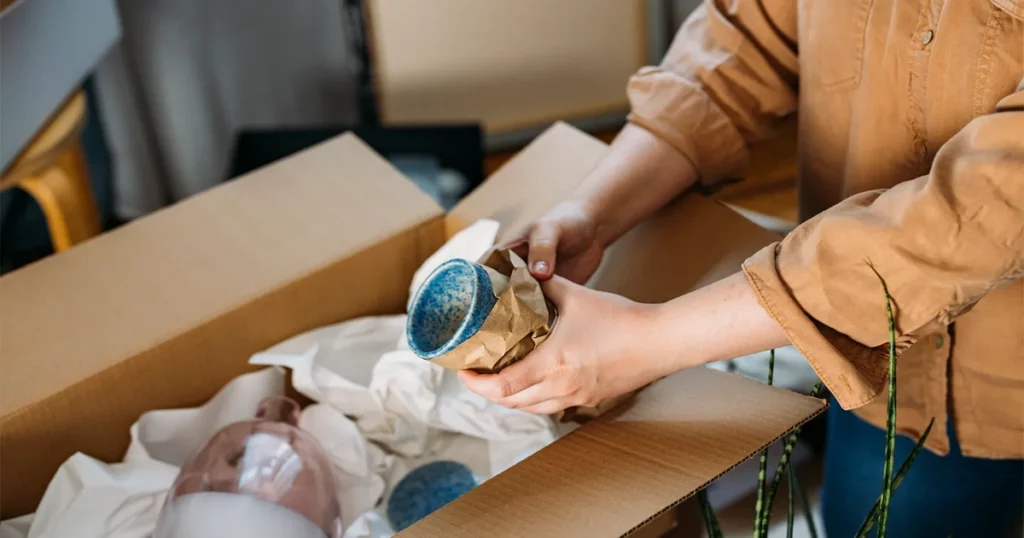No products in the cart.
Blog
How to Pack Coffee Mugs For Moving: A 8-Step Guide
Moving to a new home marks the beginning of an exciting chapter in life, but the process of getting there can often be daunting. Among the myriad of tasks involved, packing fragile items like coffee mugs requires a delicate touch and strategic planning. These beloved vessels, often holding sentimental value or cherished for their aesthetic appeal, deserve special attention to ensure they make the journey to your new abode unscathed.
In this comprehensive guide, we’ll delve into the intricacies of packing coffee mugs for moving, providing you with detailed steps and invaluable tips to safeguard your precious mugs throughout the relocation process.
Understanding the Materials Needed
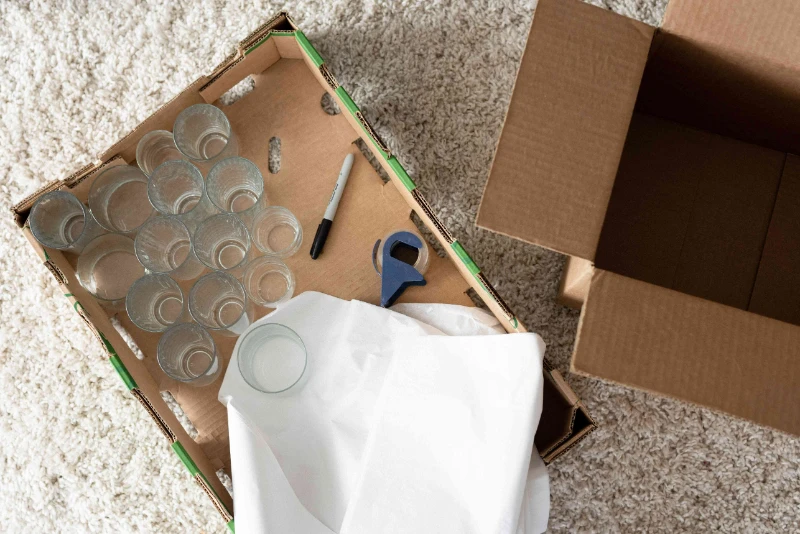
Packing coffee mugs effectively starts with having the right materials on hand. Here’s what you’ll need:
- Sturdy cardboard boxes: Invest in high-quality moving boxes in various sizes to accommodate different quantities of mugs. Opt for boxes specifically designed for fragile items.
- Packing paper: Choose unprinted newsprint or plain white packing paper to wrap each mug individually. Avoid newspaper as the ink can transfer onto your mugs.
- Bubble wrap: Provide an extra layer of cushioning by wrapping each mug in bubble wrap. Look for bubble wrap with small bubbles for optimal protection.
- Packing tape: Use strong packing tape to seal boxes securely, preventing them from coming apart during transit.
- Box dividers or cardboard inserts: Consider using dividers or inserts to separate and cushion the mugs within the boxes, minimizing the risk of breakage.
How to Pack Coffee Mugs for Moving?
Now that you’ve gathered your materials, let’s dive into the detailed packing process.
Step 1: Clean and Inspect Your Coffee Mugs
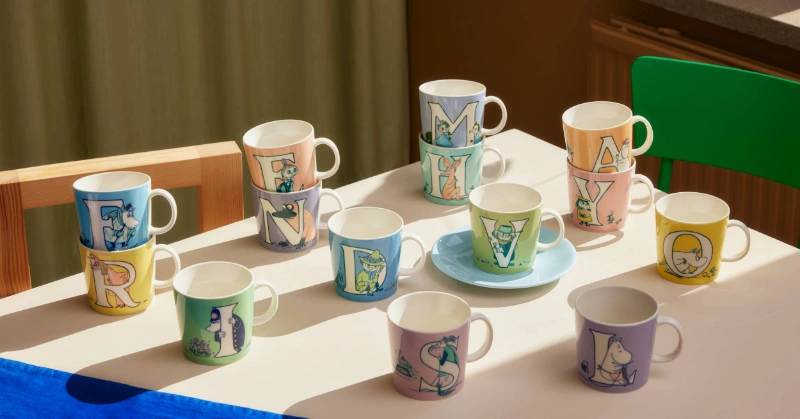
Before packing your coffee mugs, it’s essential to ensure they’re clean and free of any residue. Wash each mug thoroughly with warm, soapy water, and allow them to air dry completely. While cleaning, take the opportunity to inspect each mug for any existing cracks, chips, or imperfections. Addressing these issues beforehand will prevent further damage during the move.
Step 2: Prepare the Packing Area
Designate a clean, flat surface as your packing area. Lay out all your materials within easy reach to streamline the packing process. Clear ample space to work comfortably and efficiently.
Step 3: Wrap Each Mug Individually
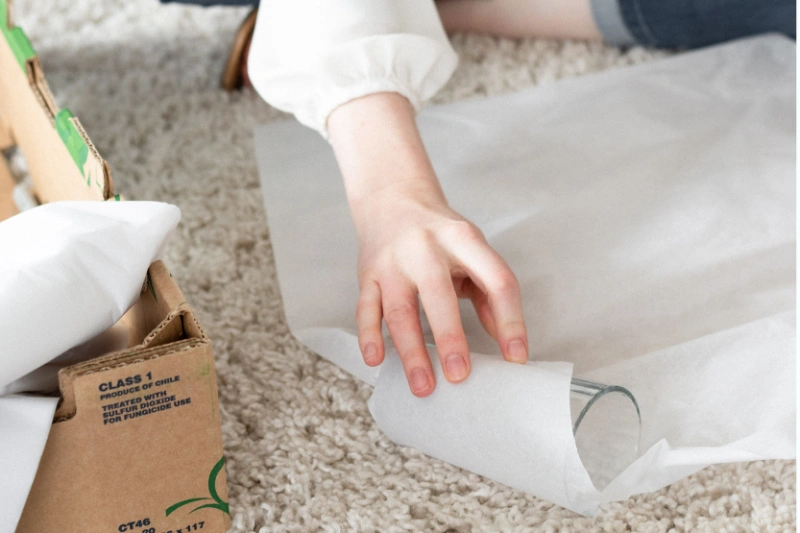
Begin by laying a sheet of packing paper flat on your packing surface. Place one coffee mug in the center of the paper, ensuring the handle faces upward. Fold one corner of the packing paper over the mug, tucking it snugly around the handle. Then, fold the opposite corner over the mug, followed by the remaining two corners.
Use packing tape to secure the paper in place, ensuring the mug is fully encased. Repeat this process for each mug, wrapping them individually to provide cushioning and protection.
Step 4: Add Extra Protection with Bubble Wrap

For an added layer of security, wrap each individually wrapped mug in a layer of bubble wrap. Start at the base of the mug and wrap upwards, covering the handle and any delicate areas. Use additional bubble wrap as needed to provide ample cushioning. Secure the bubble wrap in place with packing tape, ensuring it’s tightly wrapped around the mug.
Step 5: Arrange Mugs in Boxes
Once all the mugs are wrapped, it’s time to pack them into boxes. Begin by placing a layer of crumpled packing paper at the bottom of each box to create a cushioning base. Then, carefully arrange the wrapped mugs in the box, ensuring they fit snugly without too much room for movement.
If you’re using box dividers or cardboard inserts, insert them between the mugs to provide additional support and prevent them from knocking into each other during transit.
Step 6: Fill Empty Spaces
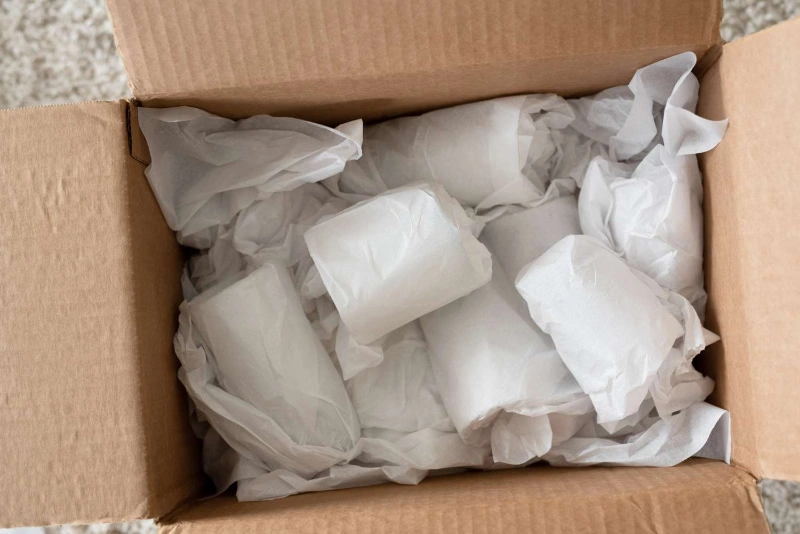
After arranging the mugs in the box, fill any remaining gaps with crumpled packing paper or additional bubble wrap. The goal is to eliminate any empty spaces within the box to prevent the mugs from shifting during transportation. Pay special attention to the top and sides of the box, ensuring the mugs are surrounded by cushioning material on all sides.
Step 7: Seal and Label Boxes
Once the boxes are packed, securely tape the top and bottom seams using packing tape. Reinforce the seams to prevent the boxes from coming apart during transit. Use a permanent marker to label each box with its contents, indicating that they contain fragile items like coffee mugs. Clearly label which side of the box should face up to ensure proper handling.
Step 8: Transport with Care
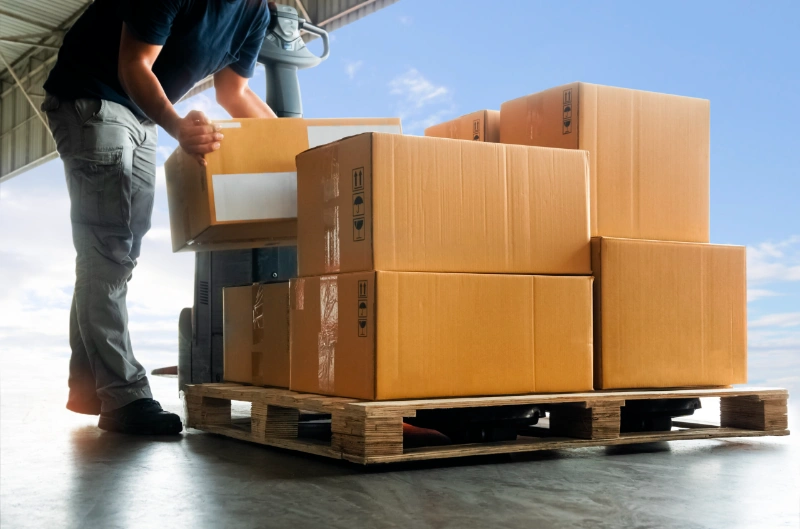
During transportation, handle the boxes containing your coffee mugs with extreme caution. Avoid placing heavy items on top of them and ensure they’re securely positioned in the moving vehicle to prevent shifting. If possible, transport fragile boxes in your personal vehicle to have more control over their handling.
DIY vs. Hiring a Pro?
When it comes to packing fragile items like coffee mugs for a move, you may find yourself contemplating whether to tackle the task yourself or hire a professional packing service.
Both options have their advantages and drawbacks, and the decision ultimately depends on your budget, time constraints, and personal preferences. Let’s weigh the pros and cons of each approach to help you make an informed choice:
DIY Packing
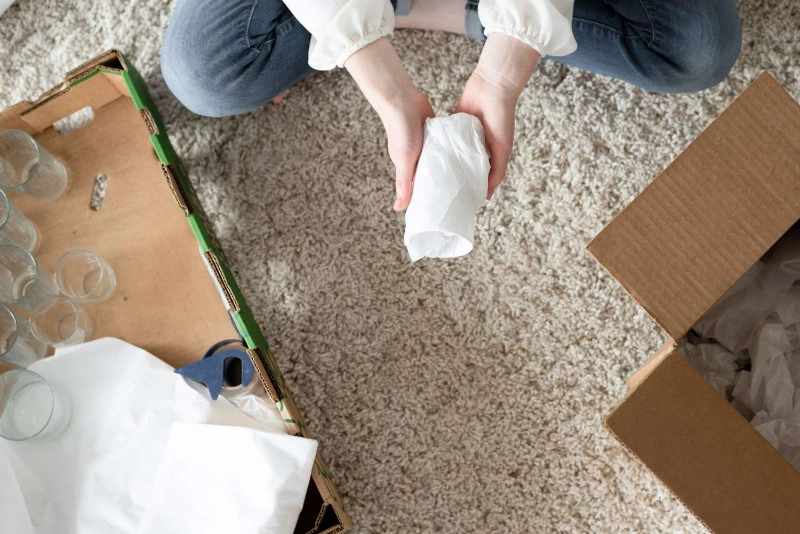
Pros:
- Cost-effective: Packing your coffee mugs yourself can save you money since you won’t have to pay for professional packing services.
- Customization: You have complete control over the packing process, allowing you to tailor it to your specific needs and preferences.
- Familiarity with belongings: Packing your own belongings enables you to handle them with care and ensure they’re packed exactly how you want them to be.
- Flexibility: You can pack at your own pace and schedule, fitting the task into your busy moving timeline.
Cons:
- Time-consuming: Packing fragile items like coffee mugs requires meticulous attention to detail, which can be time-consuming, especially if you have a large collection.
- Lack of expertise: Without professional training and experience, there’s a higher risk of improper packing techniques leading to breakage or damage during transit.
- Need for materials: You’ll need to purchase packing materials such as boxes, packing paper, bubble wrap, and tape, which can add to the overall cost and logistics of your move.
- Stress and uncertainty: DIY packing can be stressful, especially if you’re worried about the safety of your fragile items or unsure if you’re packing them correctly.
Hiring a Professional Packing Service

Pros:
- Expertise and experience: Professional packers are trained to pack fragile items efficiently and safely, minimizing the risk of damage during transit.
- Time-saving: Outsourcing the packing process frees up your time and energy to focus on other aspects of your move, such as organizing logistics or settling into your new home.
- Comprehensive service: Professional packing services typically provide all the necessary materials and equipment, sparing you the hassle of sourcing and purchasing them yourself.
- Peace of mind: Entrusting your fragile items to experienced packers can provide peace of mind, knowing that they’ll be packed securely and arrive safely at your new home.
Cons:
- Additional cost: Hiring professional packing services incurs an extra cost, which may not be feasible for those on a tight budget.
- Lack of control: You relinquish control over the packing process to the professionals, which may be unsettling for some individuals who prefer to oversee every aspect of their move.
- Scheduling constraints: Depending on availability, you may need to coordinate with the packing service’s schedule, which could impact your overall moving timeline.
- Trust and communication: It’s essential to choose a reputable packing service and communicate your specific packing requirements clearly to ensure your satisfaction with the service provided.
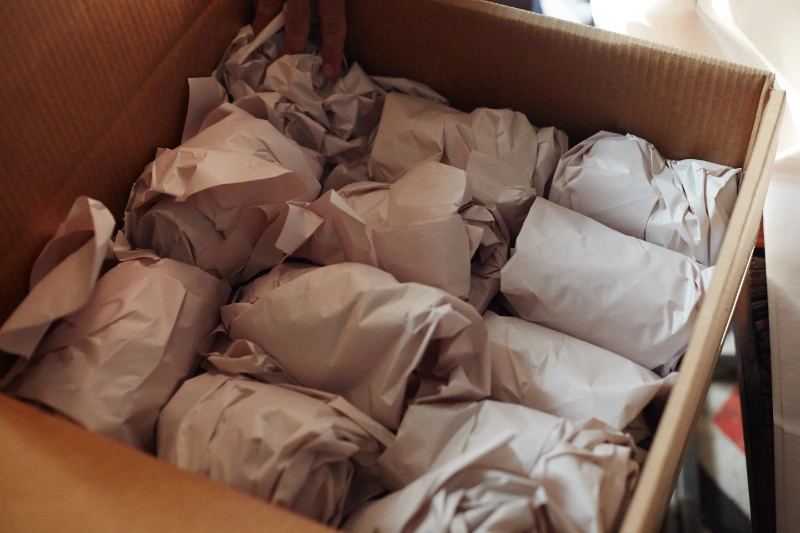
FAQs
How should I pack fragile coffee mugs to prevent breakage during transit?
To protect fragile coffee mugs during a move, wrap each mug individually in packing paper, followed by a layer of bubble wrap for added cushioning. Place them snugly in sturdy boxes with ample padding to prevent shifting.
Can I use newspaper instead of packing paper to wrap my coffee mugs?
While newspaper can provide some cushioning, it’s not recommended for wrapping fragile items like coffee mugs due to the risk of ink transfer. Opt for unprinted newsprint or plain white packing paper to ensure your mugs stay clean and free from stains.
Should I pack my coffee mugs in their original boxes?
If you still have the original boxes and packaging materials for your coffee mugs, it’s advisable to use them for added protection. However, if the original boxes are unavailable or damaged, sturdy moving boxes and proper packing materials can provide sufficient protection.
How should I label boxes containing fragile coffee mugs?
Clearly label each box containing fragile coffee mugs with “Fragile” or “Handle with Care” to alert movers to the delicate contents. Additionally, mark which side of the box should face up to ensure proper handling during transit.
Can I pack other items with my coffee mugs in the same box?
It’s generally best to pack coffee mugs separately from other items to prevent damage. However, if you need to maximize space, ensure that other items are non-fragile and won’t exert pressure on the mugs. Use dividers or cardboard inserts to keep items separated and minimize the risk of breakage.
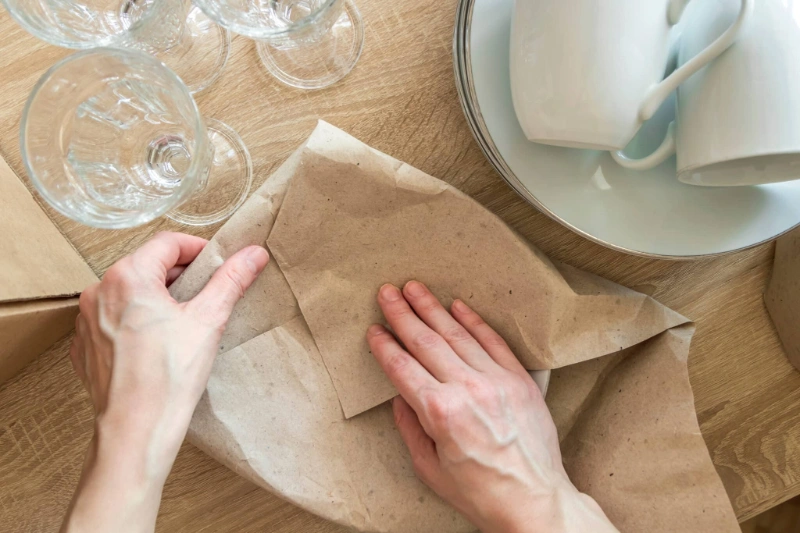
Conclusion
Packing coffee mugs for a move demands meticulous attention to detail and careful execution to ensure their safe arrival at your new home. By following the comprehensive guide outlined above and utilizing the appropriate materials, you can safeguard your cherished mugs from damage during transit.
Remember, taking the time to pack them properly now will save you from the disappointment of discovering broken mugs upon arrival. With these expert tips, you can embark on your moving journey with confidence, knowing your beloved coffee mugs are in good hands. Happy moving!


